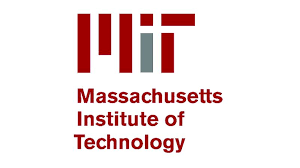
Spin
What happens if you expose atoms to incredibly cold temperatures and a magnetic field? Well, according to a team of scientists at MIT currently doing research on it, some very interesting patterns of behaviour occur.
The groundbreaking research — which could be very important for the further advancements in the technology of quantum devices that count on atomic spin to operate — is clearing up some of the strange laws that control these small particles.
In the research, the team exposed spinning lithium atoms to magnetic forces of varying strength in order to detect how the atoms responded to the force individually as well as collectively. They witnessed, quite surprisingly, varying levels of behaviour in the atoms.
Spin — similar to charge or mass — is an innate quality of atoms and means in layman’s terms the particle revolves around an axis in either a clockwise (downward motion) or anticlockwise (upward motion) motion. Depending on the atom’s spin, it can react to magnetic fields in very different ways, altering its behaviour. One of the ways an individual atom can behave is by regulating itself to other atoms in a definitive pattern. Many of these together within a magnetic field can achieve what is called an equilibrium state — this means every atom is aligned. Or it can assume more individualistic, dynamic behaviour, a phenomenon where spins uniformed over many atoms generate a wave-like pattern.

“Studying one of the simplest magnetic materials, we have advanced the understanding of magnetism,” said Wolfgang Ketterle, professor of physics at MIT and the leader of the research team. “When you find new phenomena in one of the simplest models in physics for magnetism, then you have a chance to fully describe and understand it. This is what gets me out of bed in the morning, and gets me excited.”
Equilibrium & Diffusive States
The main focus of the team’s research was how atoms develop from dynamic behaviour back into an equilibrium state again. They discovered that an important factor in how the atoms behaved was down to the magnetic force they are subjected to. Some magnets caused ‘ballistic’ behaviour where particle spins rapidly returned to an equilibrium state; others acted entirely differently, showing ‘diffusive’ behaviour where the atoms spinning back to the equilibrium state happened much more slowly.
“With all of the current excitement about the promise of quantum information science to solve practical problems in the future, it is great to see work like this actually coming to fruition today.”
— John Gillaspy
To achieve such results, Ketterle and his team of researchers exposed the lithium atoms to temperatures more than ten times colder than what can be found in interstellar space. At these mind-numbingly cold temperatures, the particles freeze so much that they barely move, which allows for easier observation of their behaviour. By manipulating lasers that act like tweezers, the team then ‘picked the atoms up’ and aligned them into strings of atom beads. The end result of their labour was an ultra-cold 40,000-strong atom lattice made up of 1,000 strings, each one consisting of some forty atoms.
“What we’re doing here is, we’re kind of plucking the string of spins. We’re putting in this helix pattern, and then observing how this pattern behaves as a function of time. This allows us to see the effect of different magnetic forces between the spins,” Ketterle said.
This is all very exciting to those science geeks amongst us, but what effect can this have on practical application in quantum computing (QC) and quantum information science (QIS)?

Well, a better understanding of the behaviour of quantum particles could go a long way in improving outcomes in new technologies like spintronic devices. These devices, as opposed to electronic devices which rely on the flow of electrons, employ the spin of quantum particles to carry, process and store information that could be good for quantum computers.
Backing up this claim, John Gillaspy, program officer in the Division of Physics at the National Science Foundation, and a funder of the research, said: “With all of the current excitement about the promise of quantum information science to solve practical problems in the future, it is great to see work like this actually coming to fruition today.”
It will take people like Ketterle and his extraordinary team to advance QIS to new levels. TQD wishes them well on further research in the space.
For more market insights, check out our latest quantum computing news here.


















